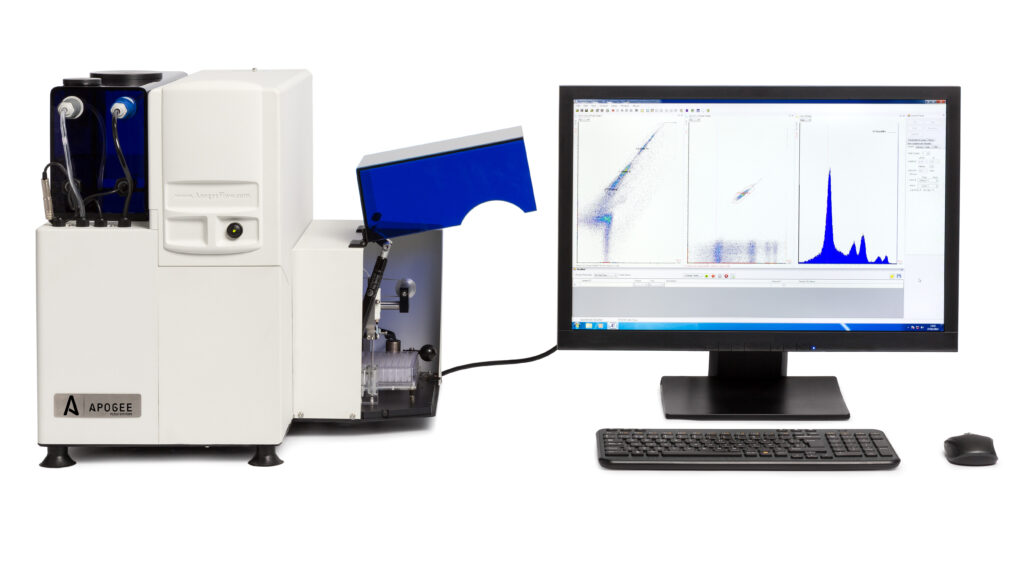也可用於 / Also available in:
 简体中文 (Chinese (Simplified))
简体中文 (Chinese (Simplified))
All the power you need when you need it most
MICRO Models
- Novel noise reduction algorithm implemented in an Altera™ FPGA
- MICRO-PLUS model tuned for extreme small particle applications (flow nanometry or nanoscale flow cytometry) including extracellular vesicles (EVs), virus applications (flow virometry), protein aggregation and metallic nanoparticles
- MICRO model tuned for the study of bacteria while still being suitable for a wide range of other applications (0.2µm to 20µm)
- Unprecedented sensitivity and resolution from multiple light scatter and fluorescence detectors
- Fast PCIe data acquisition electronics delivers up to 100k events per second
- Up to 4 spatially separated lasers, 12 optical detectors, optional Autosampler
- Patented light scatter size calibration module
Conventional flow cytometers on the market today may be able to resolve 200nm diameter polystyrene beads by light scatter but they will fall close to the instrument’s sensitivity limit and polystyrene is far more refractive (refractive index approximately 1.59) than biological particles (refractive index typically 1.40). For example, a 400nm biological particle may scatter about the same as a 200nm polystyrene bead. Conventional flow cytometers are therefore not suitable for measuring light scattered by biological particles less than about 400nm diameter.
The new Micro-PLUS is capable of measuring particles which scatter 1000 times less than 200nm polystyrene beads. The amount of scattered light falls rapidly with particle size so this exceptional performance is required for extreme small particle applications and opens up new areas of research (flow nanometry, flow virometry).


